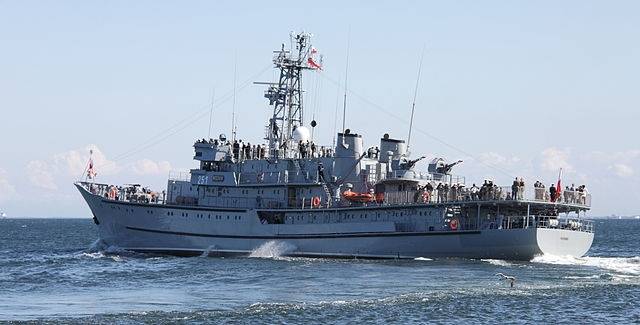#PolishNavy - A Polish Navy vessel is to make a rare visit to Ireland, as the trainee schoolship is heading to Dublin Port this morning, writes Jehan Ashmore.
The trainee vessel ORP Wodnik (251) arrived in Dublin Bay to pick up pilot from cutter, Liffey. The naval visitor is to be taken into port to Ocean Pier and remain on a three-day courtesy call.
On board are 156 personnel, of those 56 are crew and the balance are from the cadet school. During the Gulf War, the vessel was rebuilt to serve as an evacuation hospital ship.
ORP Wodnik was launched by the Northern Shipyard in Gdansk in 1976. The 77m long vessel has a full displacement of 1745 tons and has an armament of a bow mounted single double cannon. Aft of the twin funnels are a pair of double guns.
She is one of a trio of such vessels of the Polish Navy whose ships names have the prefix ORP (Okręt Rzeczypospolitej Polskiej) which translates to the Ship of the Polish Republic.
The other trainee pair are the ORP Gryf also a frigate and which too entered service in 1976 and ORP Iskra. This sailing ship is no stranger to these shores, given she has taken part in Tall Ships Races down the years.
Poland is a member of the North Atlantic Treaty Organisation (NATO) which earlier this month held a major two-day summit in the Polish capital of Warsaw, attended by US President Barack Obama.
The head of the Polish Defence Ministry discussed the enhancement of the eastern flank of NATO and the decision to deploy four robust battalions in Poland and the Baltic States.































































